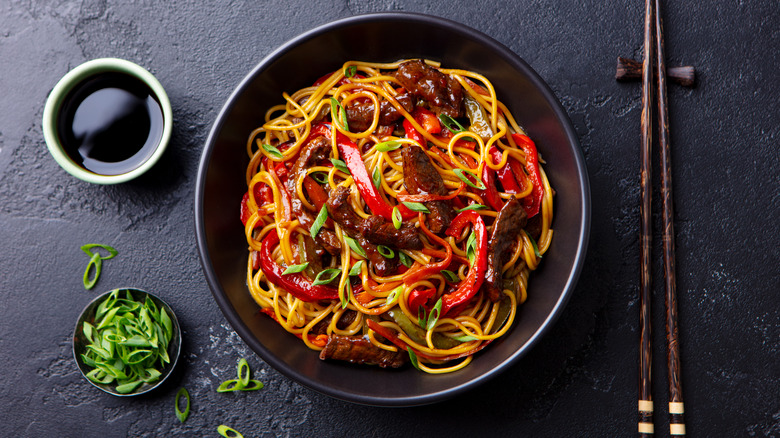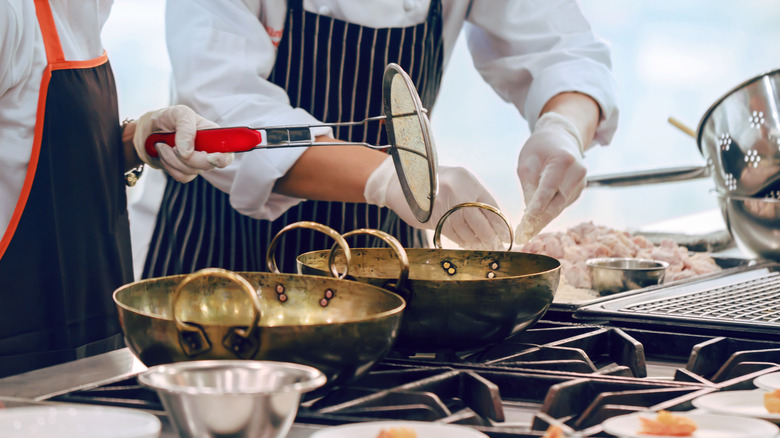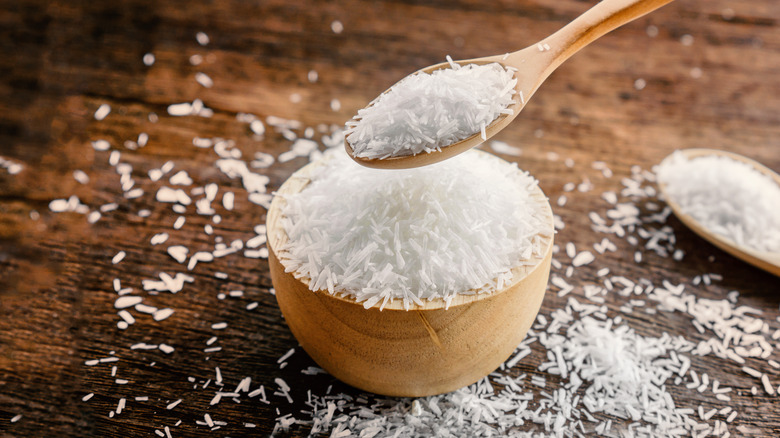The Chinese Food Myth We Should All Stop Believing
Chinese food was the most Googled cuisine-related search term in the U.S. in 2022, according to one study. Chinese food appeared in 3.35 million monthly searches, with Mexican food coming in second at 1.22 million monthly searches. In fact, in 2016, there were more than 45,000 Chinese dining establishments throughout the country. Additionally, the total number of Chinese restaurants was larger than many major fast-food chains combined, including all Pizza Hut, McDonald's, Wendy's, and KFC locations.
Based on these figures, it's easy to see that Chinese cuisine is wildly popular in this country. However, its popularity doesn't safeguard it from pervasive myths and misinformation, which leads to assumptions about numerous aspects of Chinese cuisine, as well as Chinese culture as a whole. One myth involves the cost of Chinese food and ingredients, which some diners, unfortunately, believe should be as cheap as possible.
Quality ingredients should never come cheap
Despite its popularity in the U.S., many Americans continue to have misconceptions about Chinese cuisine. One of the most pervasive myths is that authentic Chinese food must always be inexpensive, to the point where some people balk at the price of food and ingredients when they're higher than expected. This myth has its roots in the Chinese Exclusion Act, which was enacted in 1882 and prevented Chinese laborers from coming to the U.S. for a period of ten years. However, certain businesses were eligible for merchant visas despite the act, including restaurants. By making it easier for Chinese business owners to open their own dining establishments in America, the number of restaurants offering Chinese cuisine doubled between 1910 and 1920.
While this exception to the Chinese Exclusion Act enabled immigrants to earn a living and provide for their families, many restauranteurs faced an uphill battle when it came to attracting customers. As a result, it was commonplace for dining establishments to offer food at a lower price to entice American diners. This created a perception that authentic Chinese food is naturally low-cost, a belief that discredits the many talented chefs and restaurant owners specializing in this cuisine. And unfortunately, there are many other myths that cloud people's perception of Chinese food.
Debunking common Chinese food myths
Monosodium glutamate (MSG) is a common food additive that's used in Chinese cooking, as well as in canned foods, lunch meats, and other items. While MSG is used in a wide range of foods, it's most often associated with Chinese cuisine. According to Colgate Magazine, this association may be linked to a letter printed in the New England Journal of Medicine in 1968, in which Dr. Robert Ho Man Kwok speculated on the possible health effects of MSG, such as "numbness in the back of the neck" and "general weakness." In fact, the letter was a total fabrication by Dr. Howard Steel, who thought his obvious prank would be wholly evident to the New England Journal of Medicine. It was not and the myth persists to this day.
Another common myth has to do with the uniformity of Chinese cuisine. The truth is, China is replete with numerous regions and cultures, each of which has its own unique cooking style. Sichuan, Hunan, and Cantonese are a few of these styles, but they really only scratch the surface of what's available when it comes to Chinese cooking. Along with the use of different cooking techniques, ingredients also vary from region to region, with some preparations using pork and beef while others use seafood. There are also variations in seasonings, heat levels, and many other aspects. Like other myths, the best way to gain a greater understanding of Chinese food is to sample the cuisine for yourself.


